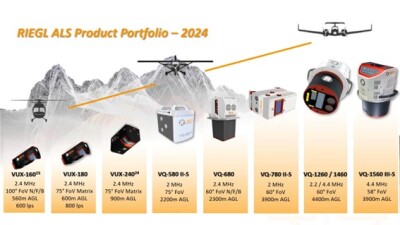BIM and geospatial technology are key technologies for transforming the construction industry, and it’s no secret that this transformation needs to take place. The construction industry has been underperforming for years, as shown by projects that are over budget and time. Why this is the case is lesser known.
According to McKinsey & Company, two important reasons might be the lack of digitization and lack of R&D funding: construction is among the least digitized sectors in the world, and less than 1% of the total revenue is spent on R&D. Not only is the construction industry ripe for digitization, McKinsey also assigned BIM and geospatial as two key technologies that can make this happen. The largest benefits are to be gained with full lifecycle projects, as shown by hard data from real-world projects.
The benefits of a combined approach to construction
As for BIM, the big payoff of a digital model will be during operations and maintenance, which typically represents 80% of the cost of a facility. However, the benefits of a combined approach of using BIM and geospatial technology in construction projects are expected to happen in full lifecycle construction projects: the only problem is that there is little hard evidence to prove this. Depending on the location, these kinds of construction projects are named design, build, finance, and maintain (DBFM), design, build, operate (DBO), or PPP projects (also known as P3, or public-private projects).
In a presentation during the AEC track of the Geospatial World Forum in Zaandam, The Netherlands, Geoff Zeiss (Between the Poles) discussed some of these construction project types worldwide and showed the benefits of a combined geospatial and BIM approach. Before he went into specific project details, he pointed out that there’s still work to be done before BIM can be adopted by others. A case in point is facilities management (FM), where buildings and assets are maintained. Zeiss quoted a recent survey from BIM Hub UK, where almost 70% of the contestants thought that the FM sector is not prepared for BIM while acknowledging its potential benefits.
Examples of construction projects using an integrated geospatial and BIM approach
In The Netherlands, national transportation agency Rijkswaterstaat began offering design-build-finance-maintain projects, where the contractor is responsible for all different project phases. This agency also motivated private engineering and construction companies to adopt an integrated geospatial and BIM approach to construction. Royal BAM construction group is another Dutch example of a construction company where an integrated approach is used: during the design and construction phase, they normally georeference everything out in the field and migrate all project data to an integrated GIS and facilities management solution for maintenance activities.
The largest engineering project in Europe, London Crossrail, is an example of a full lifecycle BIM project. Here, a 3D model that was used during design and construction, is also intended for operations and maintenance. The project targets reflect the BIM targets in the UK as a whole: 20% cost savings and construction, 40% savings during operations and maintenance. If these targets have been reached is not clear as the project is still underway.
Many of Zeiss’ examples are to be found in Asia: a substation expansion project in Cambodia, for example, used lidar for reality capturing that was integrated with existing engineering drawings so that all project data was georeferenced from the start. This immediately had a number of benefits, such as cutting design time, minimization of site visits, reduction of land requirements and material waste and elimination of change orders. A project that is leapfrogging the traditional approach to construction can be found in Maharashtra, India, where the Nagpur metro company initiated a US$ 1.3 billion project, locating 500,000 assets that can be clicked on in SAP, showing their location on a 3D map. What makes the project truly innovative is that digital models were chosen as the final deliverables instead of paper drawings, that form the basis for digitalizing operations and maintenance.






